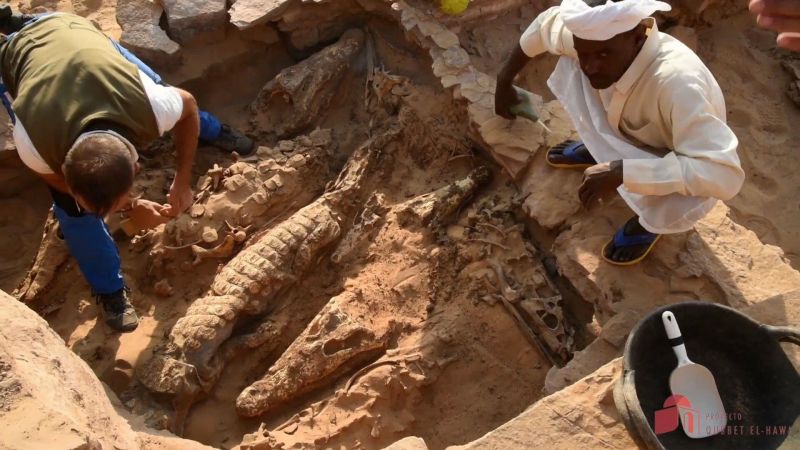Ten mummified crocodiles were found at a historical site in Egypt, providing new information about the ancient embalming process.

Ten mummified crocodiles were found at a historical site in Egypt, providing new information about the ancient embalming process. Archaeologists believe the mummies discovered in an undisturbed tomb on the Nile's west bank date from the 5th century BC and were mummified unusually.
Ten mummified crocodiles were discovered in a tomb in ancient Egypt
Mummified animals are frequently found at Egyptian archaeological sites, according to study leader Dr. Bea De Cupere. Still, despite hundreds of mummified crocodiles in museum collections worldwide, they must be thoroughly researched.
The Royal Belgian Institute of Natural Sciences Dr. Cupere and her team examined the preservation of the mummified crocodiles discovered in rock tombs in great detail. The woman claimed that ten crocodile corpses were found in an undisturbed tomb, including five that were roughly complete and five heads.
The preservation and completeness of the mummies varied. Five isolated skulls and five incomplete skeletons were found among the mummies. Therefore, theTherefore, the research team could evaluate without opening the package or utilizing radiography or CT scanning.
According to Dr. Cupere, two kinds of crocodiles—West African and Nile crocodiles—with specimens measuring 1.5 to 3.5 meters in length were recognized based on the morphology of the reptiles.
"The mummies' preservation style differs from those recovered at other sites owing to lack of evidence that the body was dissected during the mummification or resin was used.
The final phase of Qubbat al-Haw's* employment as a funeral site during the 5th Century BC is consistent with the preservation style's pre-Ptolemaic age indication. Researchers can identify historical patterns in the use of animals and mummification methods.
This can be done by comparing the mummies from various archaeological sites. Unfortunately, the absence of ancient DNA and radiocarbon, which would have helped to identify and date the bones more precisely, was one of the study's drawbacks.
Future research utilizing these methods will advance scientific knowledge of ancient Egyptian cultural practices, she said in her conclusion. The results were released in the PLoS ONE journal.

